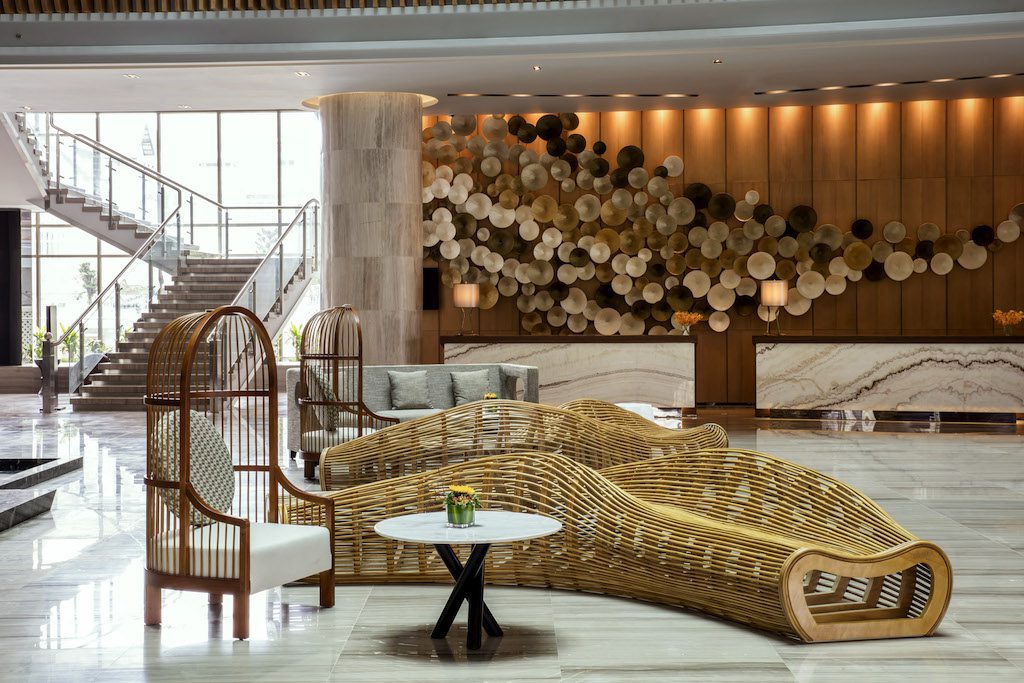Skift Take
Design touches every aspect of our lives, so the idea that it impacts every corner of the hospitality industry should come as no surprise. For the Accor Group, design serves a bigger purpose than just looking aesthetically pleasing.
This sponsored content was created in collaboration with a Skift partner.
SkiftX recently published The Transformative Role of Design in Hospitality in partnership with Accor Group. The trend report takes a close look at design’s principal role in hospitality and its future. For more insights, explore the full report here.

Accor’s unique design approach inspires the company’s mindset that hotels don’t exist just to serve their guests, but must cater to the full picture of people’s complex, 24/7 lives. In this way, the executive leaders at Accor understand that for travelers in the modern world, serving up a bed and a continental breakfast just doesn’t cut it anymore. Consumers today demand hospitality experiences that are personalized, immersive, and more design-forward than ever before. That’s why Accor incorporates design into every aspect of its business.
We talked to Steven Taylor, Accor’s chief marketing officer, about how Accor thinks about design, how the brand is breaking away from standardized hospitality codes to become blended living spaces, and how this drives customer loyalty.
SkiftX: What does Accor’s lifestyle platform designation mean for its approach to design?
Steven Taylor: Now that Accor has transformed from a midscale/economy hotel operator to a travel and lifestyle platform, we approach hospitality as a series of interconnected moments that stretch across daily life, whether you want to live, work, or play. We approach design holistically and look to move away from single-use spaces towards more dynamic, blended living spaces that cater to travelers and locals alike.
SkiftX: How has this approach shifted in recent years?
Taylor: Years ago, lifestyle brands and boutique hotels started a trend of creating vibrant spaces that targeted the local community. That has now gone mainstream — travelers don’t want to stay in their rooms, they want to be part of a community and stay where the locals hang out. Hotel design has had to evolve dramatically from formal, functional spaces designed to process travelers into much more dynamic living spaces welcoming locals as a priority.
SkiftX: How does the look and feel of each brand come together under one brand umbrella?
Taylor: We are breaking away from the standardized hospitality codes of the past to design innovative spaces that surprise and delight across all our brands. The goal is for our properties to become blended living spaces that connect with consumers of all types, whether they’re traveling or not. Our new positioning, “Live Limitless,” reflects our ambition to be relevant across the daily lives of our consumers as well as our innovative, pioneering spirit. We incorporate that attitude into our design philosophy across all segments of the brand portfolio.
Examples of this include the relaunch of Ibis and the new design collection we launched in the first quarter of this year, the transformation of Pullman’s public spaces, as well as the launch of our new co-working brand Wojo.
SkiftX: How do the design and marketing teams work together at Accor?
Taylor: They have an incredibly close day-to-day relationship. Essentially, we are one team working towards the same brand vision and customer experience. Consumer expectations and needs have evolved dramatically over the last 10 years, and as we seek to ensure our brands remain relevant to consumers, our design teams have been absolutely critical in transforming the brand experience to meet the needs of a modern day consumer.
The recent relaunch of Ibis is a great example of this collaboration. We were able to relaunch the brand in a holistic manner by coordinating a new collection of designs with other key initiatives, such as the launch of the Ibis music program and a new global brand campaign.
SkiftX: How does design play a role in driving customer loyalty?
Taylor: In this social media–fueled world, customer experience is the most powerful form of marketing we have. Customers are looking for surprising, stimulating experiences and Instagrammable environments, and design helps us create engaging spaces that encourage customers to share and amplify the brand. The role of hotels has evolved in the last decade to no longer focus solely on the traveler but to become social hubs integrated within the local community. Design plays a pivotal role in transforming that hotel experience and ensuring that all types of customers — travelers and locals alike — feel welcome and come back time and time again.
SkiftX: In what parts of the hospitality experience is good design most important?
Taylor: The public spaces in a hotel have always been an incredibly important aspect of the hospitality experience. All the consumer research shows that those first few moments of arrival are the most important elements in determining a positive impression and increasing customer satisfaction. As the role of hotel public spaces has evolved over the last decade, that importance has been amplified even further. Consumers expect much more than just a functional space where they can check in — they’re demanding stimulating, multi-use spaces. That has increased the emphasis on public space design even further.
SkiftX: What is one aspect of the hospitality experience that’s been lacking that could be fixed by good design?
Taylor: I think the check-in experience is primed for a deep transformation, with technology empowering a seamless and stimulating arrival experience. Brands like Ibis are removing check-in desks and breaking down the boundaries between employees and guests to provide a more welcoming arrival experience, for example. The removal of check-in desks has allowed us to completely rethink the use of the public spaces of our hotels.
To read more, download the full trend report, The Transformative Role of Design in Hospitality.
This content was created collaboratively by Accor Group and Skift’s branded content studio SkiftX.
Have a confidential tip for Skift? Get in touch
Tags: accor, Accor 2019 Year In Review, design, loyalty

